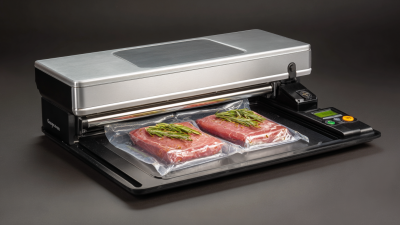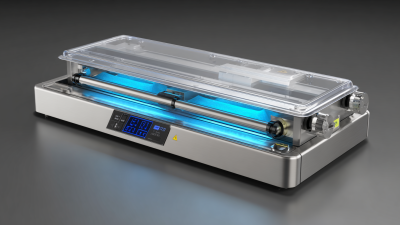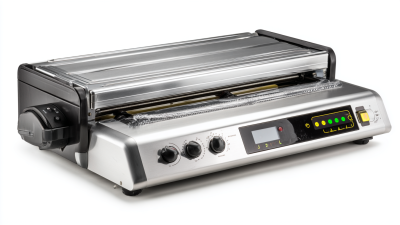Leave Your Message
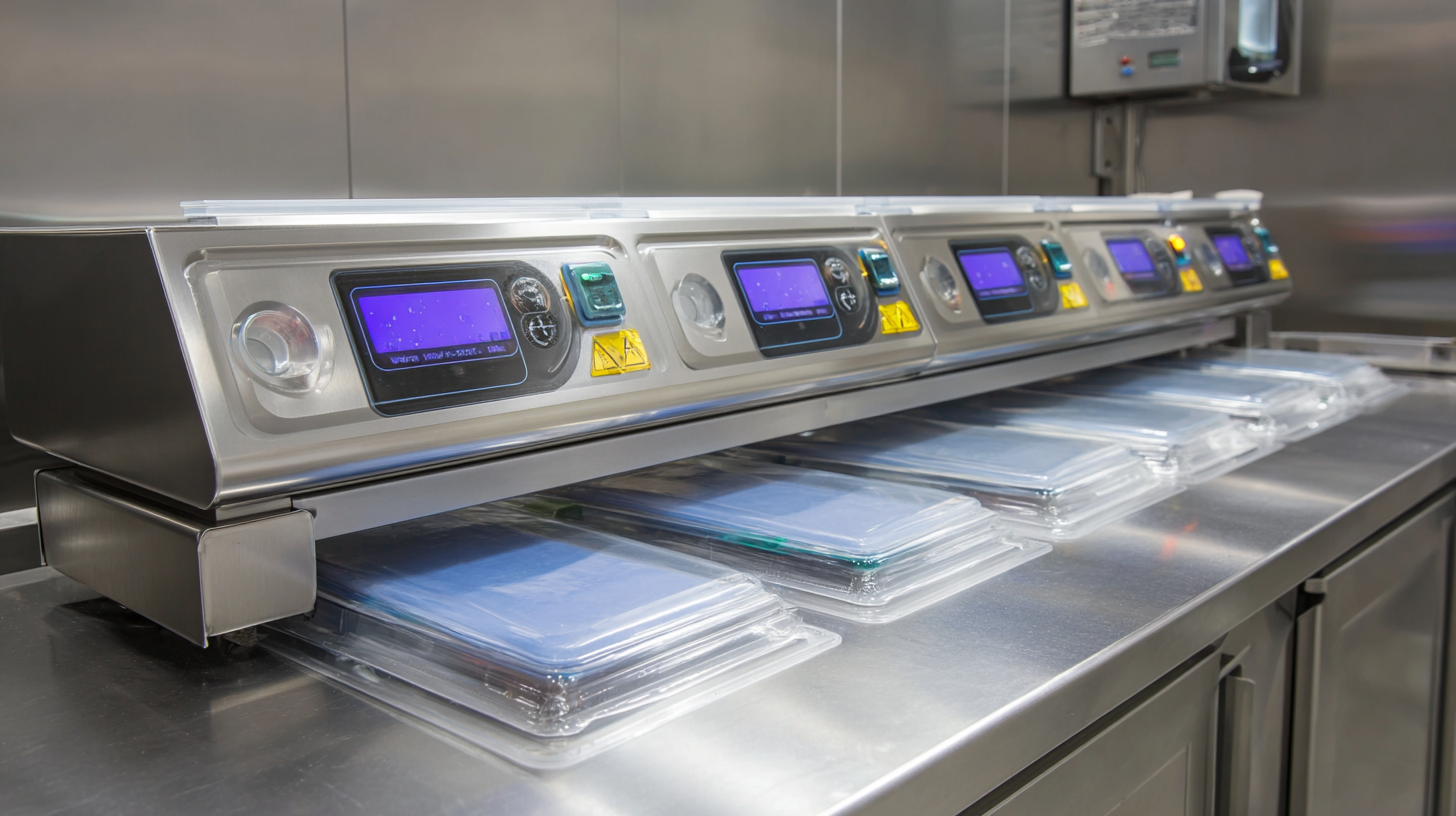 In an era where food preservation and waste reduction have become paramount,
Vacuum Sealing Machines have emerged as a premier solution for maintaining the freshness and longevity of perishable items.
According to recent industry reports, the vacuum sealing market is projected to grow significantly, with a projected value of $8 billion by 2025, driven by increased consumer awareness and the shift towards sustainable practices.
These machines utilize advanced technology to remove air from packaging, thus inhibiting the growth of spoilage-causing microorganisms and preserving food quality.
With the rise in home cooking and meal prep trends, vacuum sealing not only extends shelf life but also enhances food storage efficiency, making it a critical tool in modern kitchens.
This article explores the secrets behind vacuum sealing machines, offering invaluable tips to optimize food preservation and storage techniques for both personal and commercial use.
In an era where food preservation and waste reduction have become paramount,
Vacuum Sealing Machines have emerged as a premier solution for maintaining the freshness and longevity of perishable items.
According to recent industry reports, the vacuum sealing market is projected to grow significantly, with a projected value of $8 billion by 2025, driven by increased consumer awareness and the shift towards sustainable practices.
These machines utilize advanced technology to remove air from packaging, thus inhibiting the growth of spoilage-causing microorganisms and preserving food quality.
With the rise in home cooking and meal prep trends, vacuum sealing not only extends shelf life but also enhances food storage efficiency, making it a critical tool in modern kitchens.
This article explores the secrets behind vacuum sealing machines, offering invaluable tips to optimize food preservation and storage techniques for both personal and commercial use.
When choosing the right vacuum sealing machine for your food preservation needs, several key factors should be considered. First, assess the type of food you plan to store. If you mainly package liquids or moist foods, a machine with a moist setting will be essential to prevent liquid from being sucked into the vacuum channel. For dry foods, a basic vacuum sealer can suffice. Additionally, consider the frequency of use; a heavy-duty model may be warranted for regular use, while a more compact machine could work for occasional sealing.
Tips:
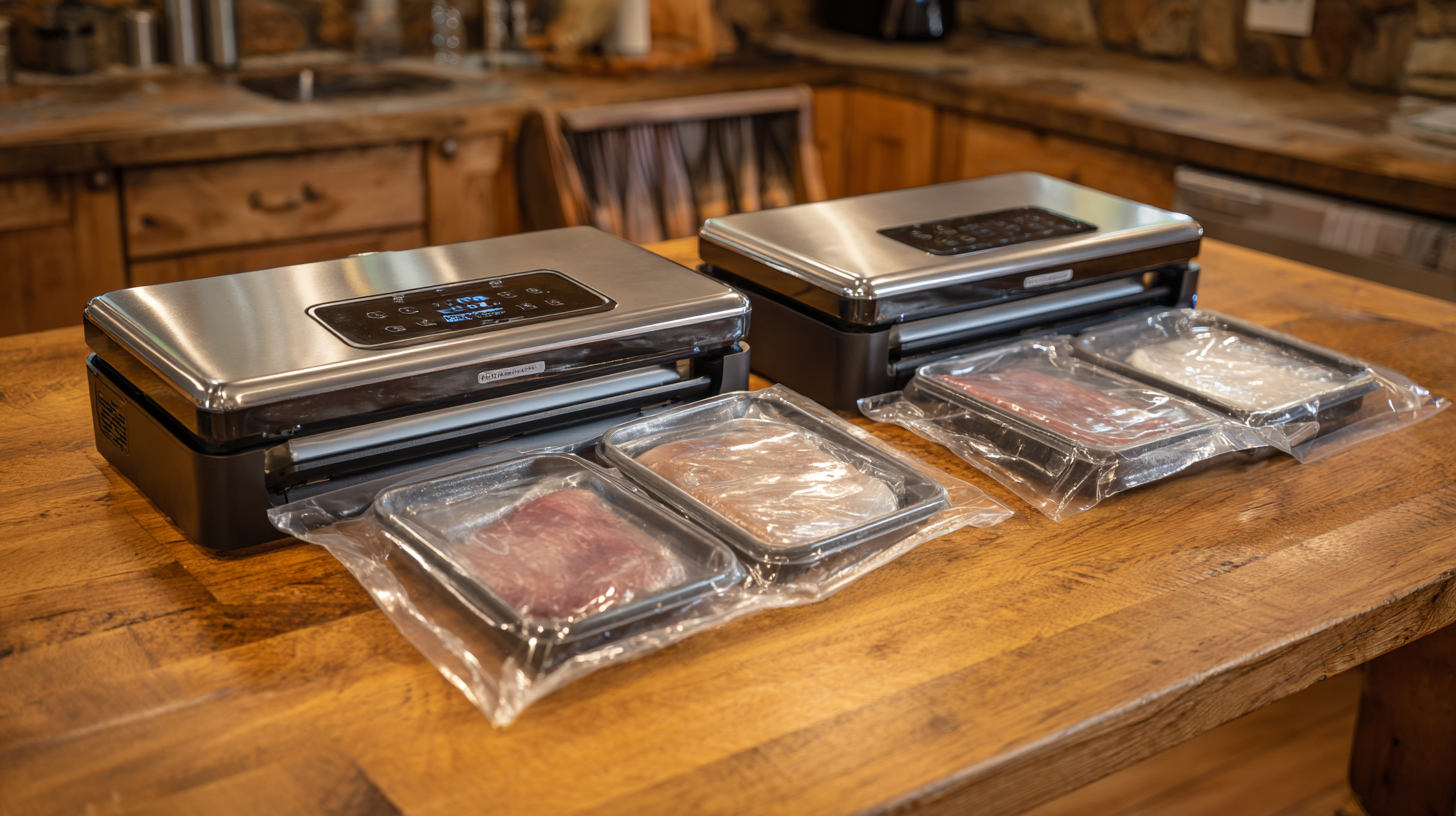
Vacuum sealing is an excellent way to preserve food, extend storage life, and maintain flavor. Preparing food properly before vacuum sealing is essential to ensure the best results. First, make sure that the food is clean and dry. Rinse fruits and vegetables, then dry them thoroughly with a clean towel. For meats, trim off excess fat, as it can lead to spoilage. Portion your food into manageable sizes before sealing; this helps in minimizing waste and makes it easier to use later.
Tips for Successful Vacuum Sealing:
- Use high-quality vacuum bags to prevent punctures and preserve freshness. They should be designed for vacuum sealing to ensure optimal airtightness.
- Pre-freeze moist foods like berries or raw meat for 1-2 hours before sealing, as this helps maintain their structure and prevents squishing.
- Label your vacuum-sealed bags with the date and contents to keep track of storage times, ensuring that you use older items first to avoid waste.
By following these preparation techniques, you can maximize the effectiveness of your vacuum sealing efforts, ensuring your food remains safe and delicious for longer.
Vacuum sealing is a game-changer for anyone looking to maximize the longevity of their food. By creating an airtight seal, vacuum sealers eliminate air exposure, which is a primary cause of spoilage and degradation. This method is particularly effective for preserving a variety of foods including
meats,
vegetables,
and even fruit. Unlike traditional storage methods, vacuum sealing can help retain the fresh taste and nutritional value of food products for significantly longer periods.
In practice, utilizing vacuum sealing for long-term food storage involves following a few key techniques. Properly preparing foods by washing and drying them before sealing can enhance preservation quality. Additionally, it's essential to store vacuum-sealed bags in the right conditions to avoid freezer burn and maintain optimal temperature.
By integrating vacuum sealing into your food storage routine, you not only extend shelf life but also ensure that you have nutritious and fresh ingredients on hand, ready for any culinary adventure or emergency preparedness situation.
 Vacuum sealing is an effective method for preserving food by removing air, which helps to prevent spoilage and prolongs the shelf life. To maximize freshness when vacuum sealing, proper techniques are essential. First, make sure to select high-quality bags specifically designed for vacuum sealing. These bags are thicker than regular plastic bags and prevent punctures or tears, ensuring a secure seal.
Vacuum sealing is an effective method for preserving food by removing air, which helps to prevent spoilage and prolongs the shelf life. To maximize freshness when vacuum sealing, proper techniques are essential. First, make sure to select high-quality bags specifically designed for vacuum sealing. These bags are thicker than regular plastic bags and prevent punctures or tears, ensuring a secure seal.
Tip: Prior to sealing, pre-freeze items like fruits and moist foods to maintain their shape and texture. This not only enhances the quality of the food but also aids in achieving an airtight seal.
Additionally, be mindful of the portion sizes you seal. Smaller portions allow for quicker defrosting and reduce the likelihood of waste since you only open what you need. Also, include a desiccant pack in the bag when sealing items prone to moisture, as this will absorb excess moisture and keep your food fresher for longer.
Tip: Label each bag with the date and contents before sealing. This organization helps you keep track of your stored food and ensures you use older items first, preventing unnecessary spoilage.
Vacuum sealing machines are essential tools for preserving food, extending its shelf life by removing air that causes spoilage. However, users often encounter common issues that can hinder the effectiveness of these devices. According to a report by the Food Preservation Technology Institute, improper sealing could lead to significant food waste, with one in five households experiencing spoilage in sealed items due to air leaks or inefficient seals. Recognizing the importance of troubleshooting these problems can save money and reduce food waste.
One of the most frequent issues is insufficient vacuum pressure. This usually occurs when the vacuum sealing bag is not placed correctly or if there are food particles obstructing the seal. To rectify this, always ensure that the opening of the bag is clean and clear. Tip: Use a damp cloth to wipe the sealing surface before starting the vacuum process. Additionally, consider investing in high-quality vacuum bags that are designed to withstand the pressure and prevent tears during sealing.
Another common problem is that the machine doesn’t seal properly, which can happen if the heat strip isn’t functioning well. Regularly check the heat strip for wear and tear; replacing it when needed ensures a strong, reliable seal. Tip: Avoid overfilling bags, as this can prevent the seal from forming correctly. Keeping these troubleshooting tips in mind can enhance the performance of your vacuum sealer and ensure your food stays fresh for longer.
